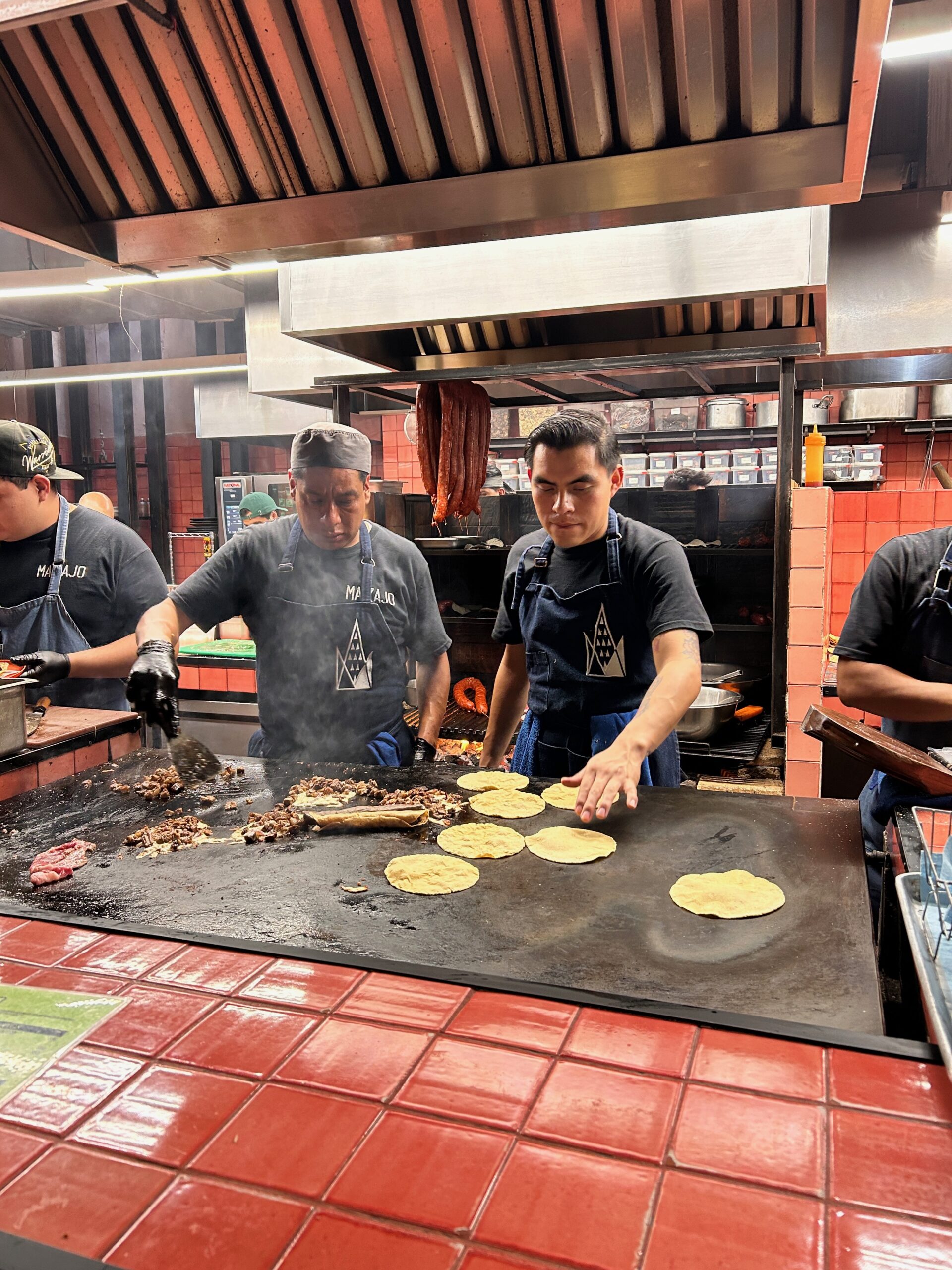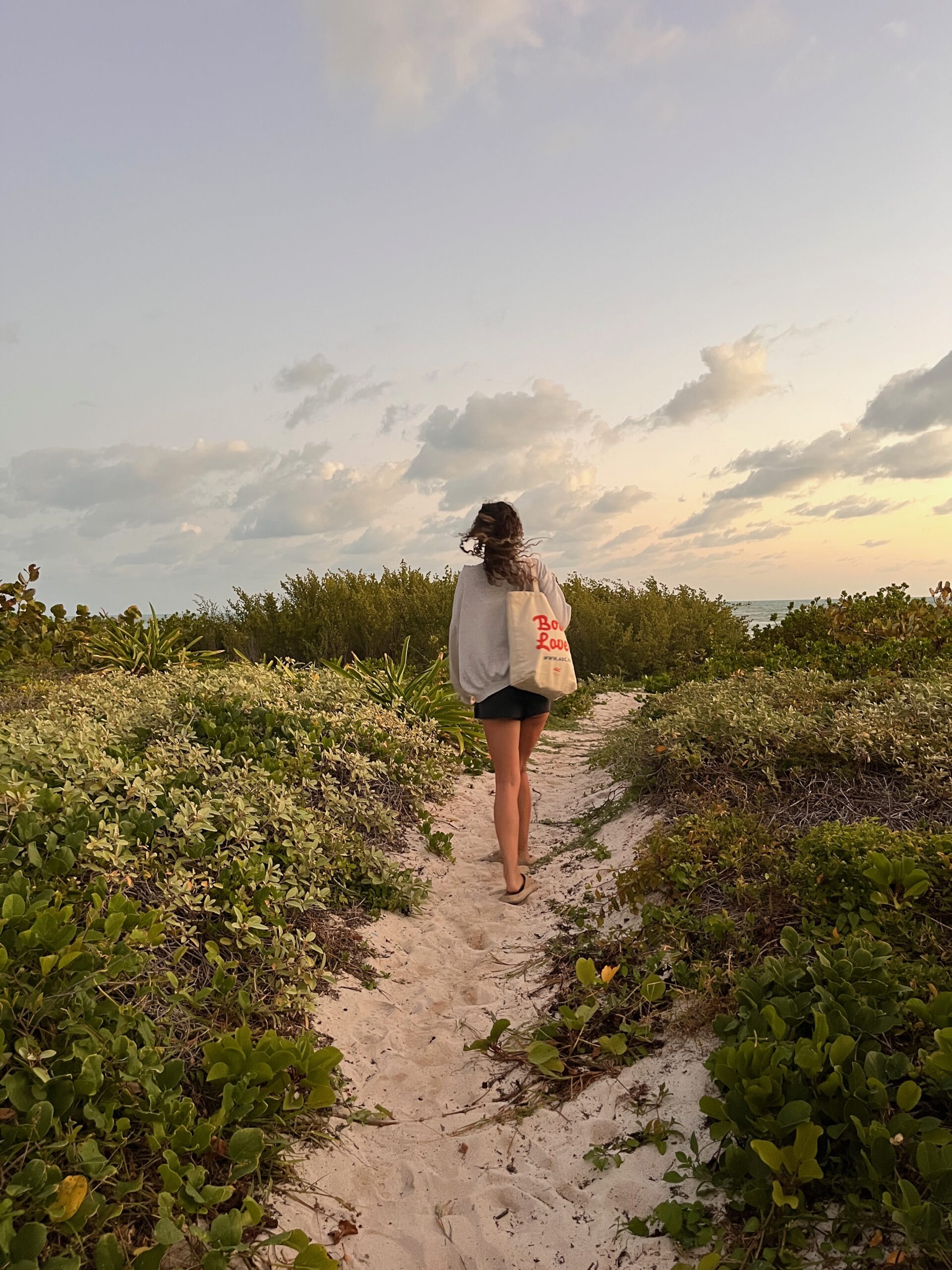[last updated in March 2025]
Tulum, like most of the Yucatan Peninsula, features many cenotes – natural pools of fresh water resulting from ground sinkholes. Whilst the Mayan civilisations used cenotes for water supplies and sacrificial offerings, they are now popular spots for natural excursions and scuba diving. In this article, you’ll discover the best cenotes in Tulum for breathtaking views, away from crowds and full of magical scenes. I earn small commissions for every purchase made through the links below, and it’s the same price for you.
What are cenotes and where do they come from?
Cenotes are natural sinkholes or water-filled pits that are found in the Yucatan Peninsula of Mexico and some other parts of the world. The word “cenote” comes from the Mayan word “dzonot”, which means “well”. They are formed when the limestone bedrock in the area collapses, revealing the groundwater below. The water in cenotes is typically crystal clear and has a distinct blue-green color due to the high levels of minerals and nutrients in the water. In sum, cenotes are little heavenly pools of water scattered around the jungle.
What are cenotes used for?
Cenotes have been important to the local people for thousands of years, as a primary source of fresh water in an otherwise dry and arid landscape. The ancient Mayans even considered cenotes to be sacred, believing that they were gateways to the underworld. Today, they are popular tourist attractions (e.g. paddle boarding, snorkeling) and many of them are also home to a variety of aquatic life, including fish, turtles, and even crocodiles. Essentially, cenotes are not only important for their beauty and recreational value, but they also play a crucial role in the ecosystem by providing a habitat for a wide variety of plants and animals. It is therefore important to be cautious and respectful when visiting them: avoid using chemical products, plastic, and smoking.
What is so special about cenotes?
In the 1980s, archaeologists discovered that most of the cenotes of the Yucatan formed a near-perfect ring of about 200km. Scientists believe that this corresponds to the edge of the crater caused by the asteroid which struck the earth 66 million years ago, fundamentally altering the course of the blue planet and allowing humanity to prosper (1). For this reason, many find a spiritual connection with Tulum, one of the last cities built and inhabited by the Mayan civilisation. Mayans notably perceived cenotes as “symbolic paths between the terrestrial world and the underworld” and used them for sacred ceremonies and rituals (2). Indeed, they often saw flora and fauna living in cenotes, such as manatees, as godly creatures.
What should you keep in mind when visiting cenotes ?
There are a couple of well-known rules which apply to all cenotes and others which vary depending on the location. When arriving, you will be presented with guidelines to follow.
- The majority of cenotes are open from 10:00 to 16:00.
- Most cenotes require an entrance fee, usually between 150-300 pesos (7-15 EUR).
- Sometimes, they require visitors to take a shower before and after spending time in the water.
- Most cenotes prohibit the use of mosquito repellent and sunscreen as they damage the water.
- Some cenotes do not allow professional cameras in or charge extra for it.
- Many cenotes can be explored deep underwater with diving equipment.
- Most cenotes have fauna in the surroundings: fish, birds, iguanas, and sometimes more.

Which are the best cenotes in Tulum?
Here are my 5 favourite cenotes with breathtaking views within 20 min of Tulum:
Make sure to bring a snorkeling mask, a swimsuit, and a towel!
You can download the list of locations directly on Google Maps.
Cenote Encantado
I love the cenote Encantado for its panoramic views. It is big and open, with the possibility to swim, kayak, or paddle board throughout. Additionally, it is relatively quiet despite its location right off the main road of the hotel zone.
There are many ways of accessing it; however, the one I recommend the most is via the café Pies Descalzos which has direct deck access to the water. This way, you only pay your drinks or food and no entrance fee. They have delicious smoothies, cocktails ,and small dishes such as guacamole and pancakes. Bonus points for the small parking and free wifi.
I recommend discovering other spots on the bank if you can. The hotel next door has an epic rooftop with panoramic view on the cenote.
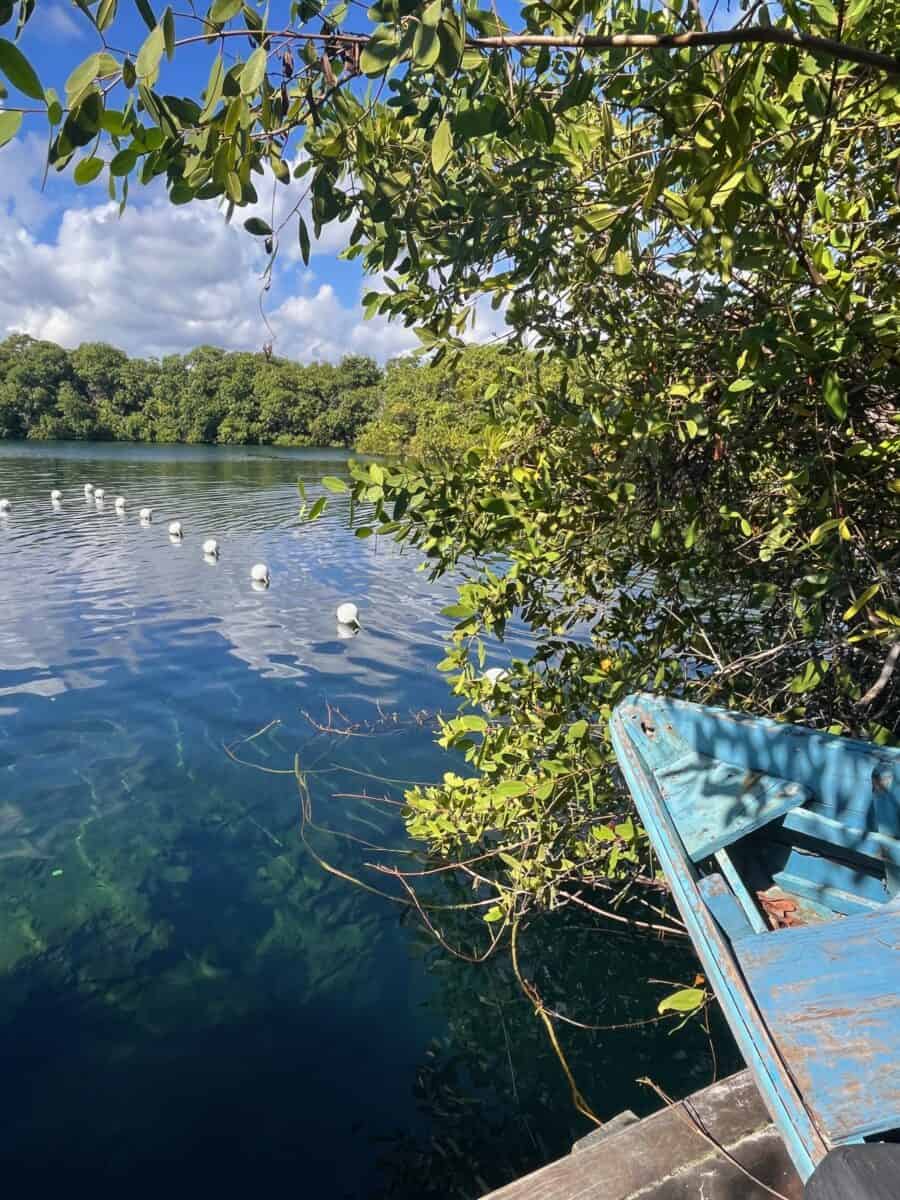
Cenote Yax-Kin
This cenote is made of several areas with different levels of depth, which is ideal for people who prefer to see where they swim as the water is very clear. It’s also great for children and adults learning how to swim. Besides, cenote Yax-Kin has several areas where you can lounge and relax, including a small restaurant.
The cenote is surrounded by beautiful plants and wildlife, including iguanas. It’s the perfect spot for an afternoon of tanning and relaxing in the water. I would avoid weekends and peak times so that you can enjoy this cenote without much people. We once arrived there around 3PM and there was no one else but us!
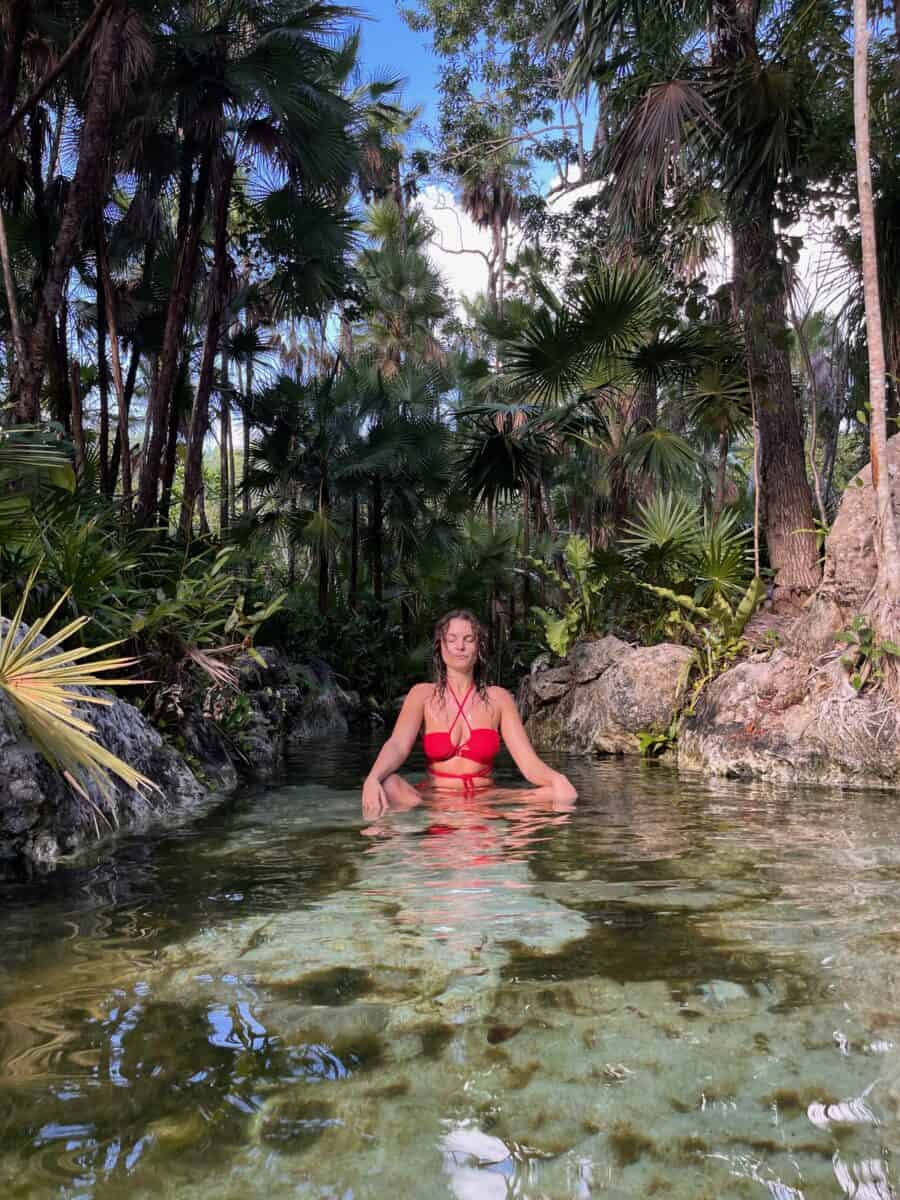
Cenote Taak Bi Ha
I recommend the cenote Taak Bi Ha for a unique experience. It is underground, which means the pool of fresh water is in a cave. There are many cenotes of this kind around Tulum, but they can be quite dark in my opinion. Taak Bi Ha is particularly bright and big, with many little magical corners to explore.
The entrance fee is of 400 pesos per person (18€). It’s on the higher end of the cenotes entrance fees, but totally wort it. If you can, arrive early or wait for groups to leave the area so that you can enjoy the cenote by yourself. Trust me, it’s a totally different experience.
You may rent snorkelling equipment and will be asked to take a shower before entering. If you want to scuba dive, book a guided tour here.
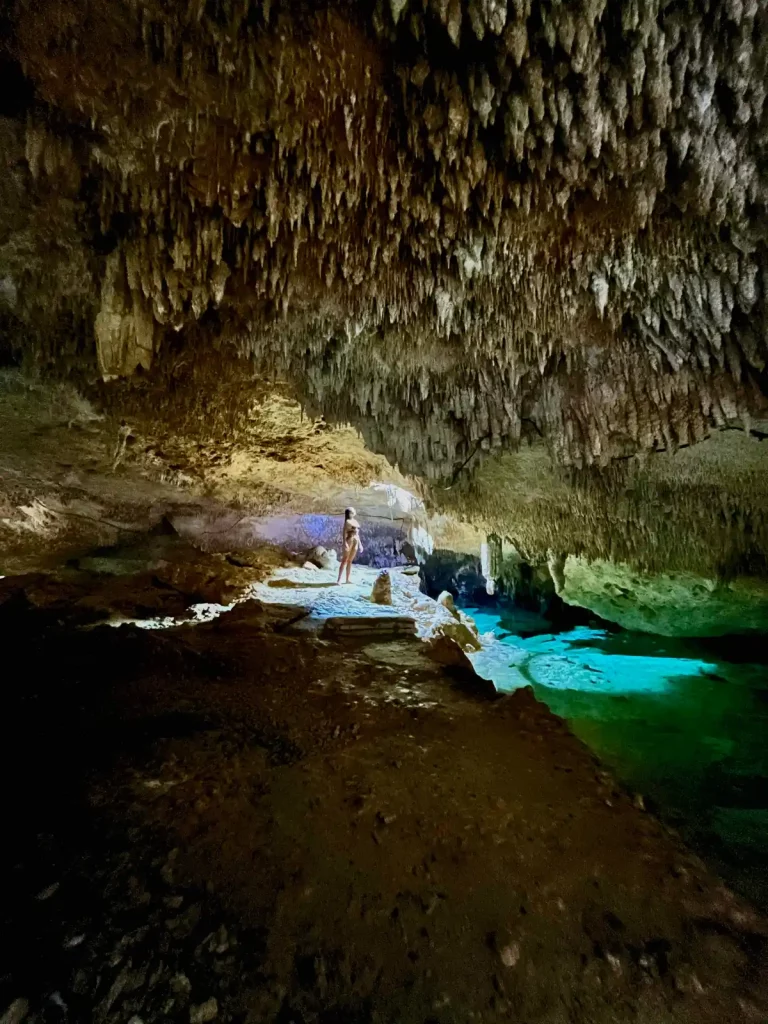
Cenote Escondido
I like the cenote Escondido for its ease of access. Its name literally means “hidden”. It is owned by a local family who takes care of two cenotes: Cristal & Escondido. They are close to each other and can be visited together or separately. The entrance fee for both is 300 pesos (13€) per person.
It is open and has many chilling areas, including hammocks, either in the sun or shadow. For this reason, Cenote Escondido is a great choice to spend the afternoon and relax. It features a rope jump spot, beautiful waterlilies, and.
Like many other cenotes of this type, Cenote Escondido has loads of curious little fish you may come and bite your skin (it can be surprising but does not hurt).

This is the view across from Casa Cenote! This side of the beach is part of the more secluded and exclusive zone of Tulum called Tankah Bay. It’s more tranquil and thus nature is better preserved.
Casa Cenote
If you are looking for a thrilling experience, this is it! This cenote, located 15 minutes from Tulum’s town, provides snorkelling and diving equipment to go through a beautiful river-like path in the middle of the jungle. Prepare for incredible views of wild schools of fish, mangrove, and perhaps even… a friendly pet crocodile.
It’s also just across from a free beach entrance (see video below), which is perfect to warm up afterwards and eat a fresh ceviche with a margarita. 👌 thank me later! You just cannot miss it. Book your tickets and tours here.
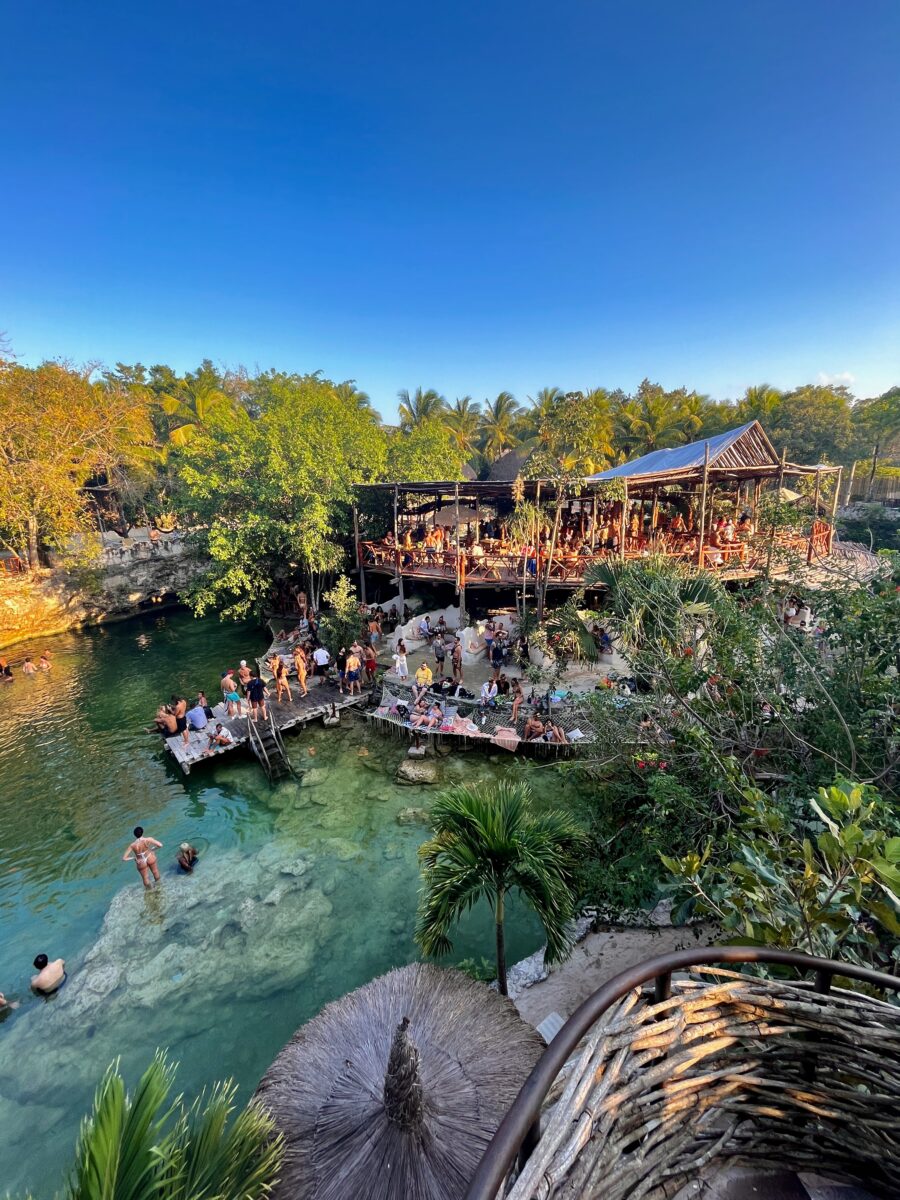
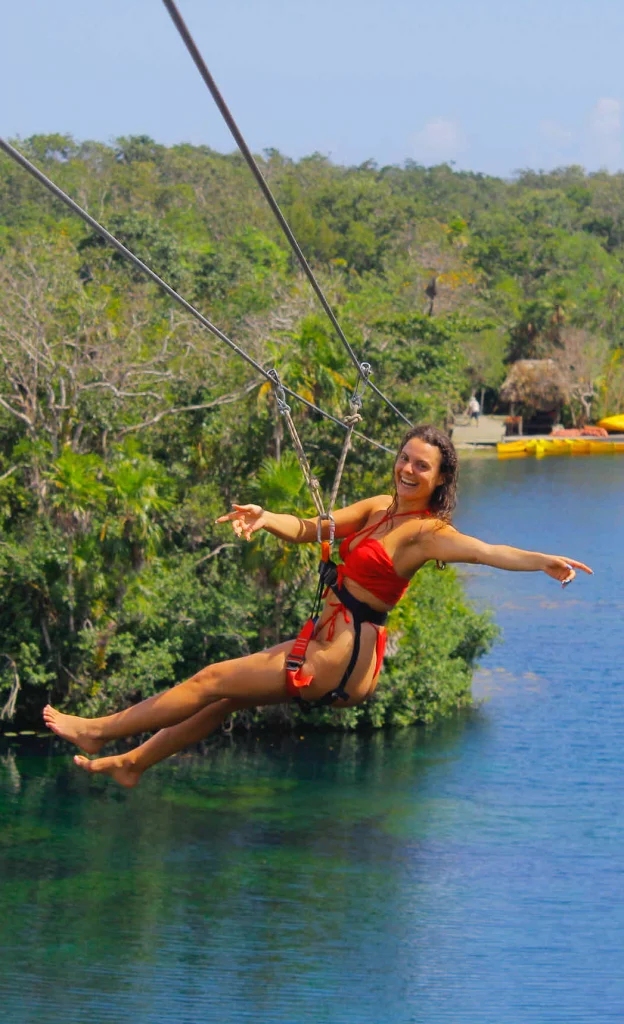
Tankah Park
Tankah is by far the best cenote park I have visited in Tulum. It is a natural reserve owned by Mayan families with five cenotes, a common table, and local accommodations.
It is only possible to visit Tankah via a tour agency and upon reservation (book here). Once arrived, you will have four hours to enjoy the park with a local who will guide you through the cenotes and end with a delicious Mexican buffet. Therefore, you will most of the time be the only group in each cenote, which is a genuinely magical experience.
Zip lines, jumps, kayaks, turtles, exotic fish and birds, Tankah has it all. The entrance fee is around 3000 pesos (150€) per person, including transport and lunch. Absolutely worth it. I cannot wait to go back.
A Local Expat's Guide to Tulum
I wanted to gather tips and experiences after living in Tulum for several months, so I made this travel guide with information about how to get to Tulum, how to move around, where to stay, and what to do!
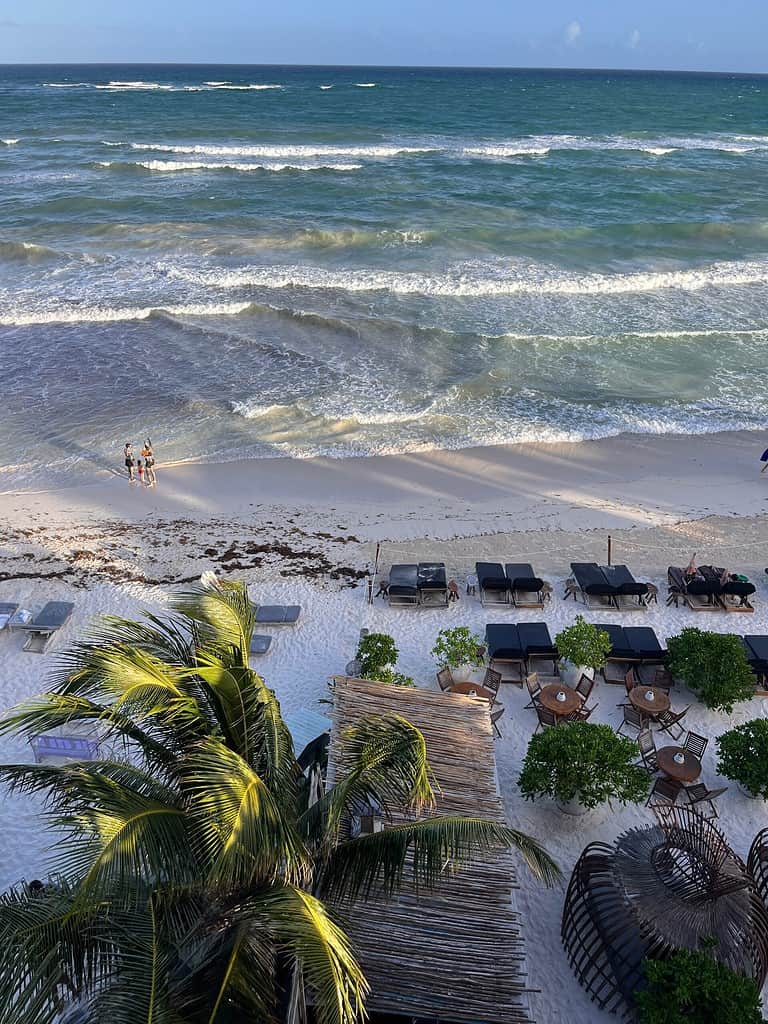

Hi! I’m Sophie
I am a social scientist and world explorer. In my work, I analyse the evolving meaning of security. I enjoy traveling, yoga, and electronic music in my free time. I consider myself an enthusiastic feminist and self-care advocate.


